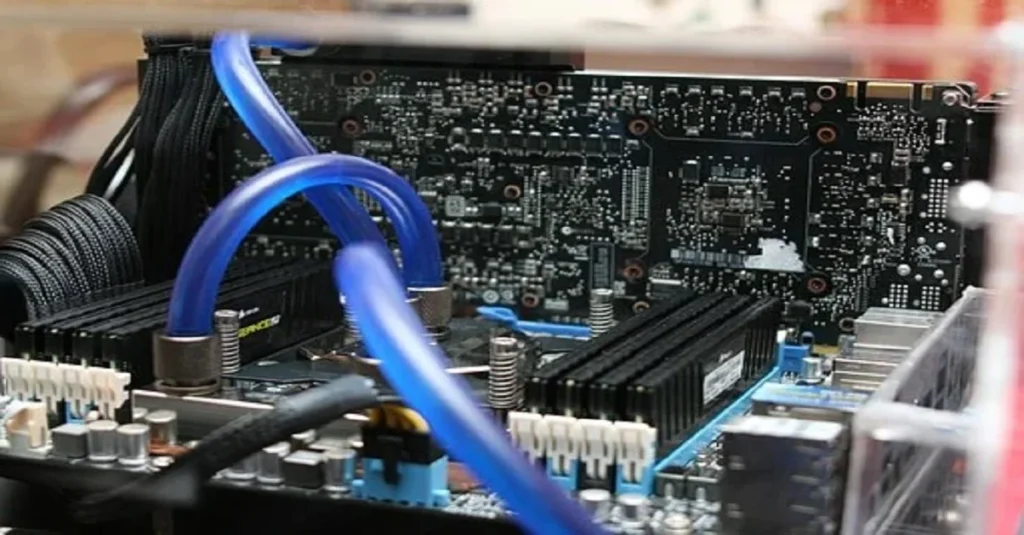
What Motherboard Should I Get For Gaming PC 2023?
For the best visual experience in gaming, What Motherboard Should I Get For a Gaming PC? Yes, you need the latest, most powerful PC you can afford, and you’ll need to make sure it has a great graphics card that can handle your games at their highest resolutions. If you’re looking for a Gaming PC, it’s a bit of a squeeze, and while there’s an abundance of choices, there are only a handful that we trust enough to recommend to readers.
That means you need to understand what kind of computer you’re looking for in order to find the one that’s right for you. You’ll also need to consider factors like processor speed and the maximum amount of RAM you need to get the highest possible performance. Here are a few of the recommended systems that we’ve found to be ideal for gaming in the highest possible settings.
A couple of caveats. For our best graphics cards roundup, we used tests run at the PC Gamer benchmark tools. These aren’t appropriate for using in-game benchmarks to gauge performance. Our recommended systems are more appropriately used for watching movies at home. Let’s get started!
Of course, the first big decision is what sort of graphics card you need. GPU is short for graphics processing unit and stands for the graphics processing unit. GPUs are the heart of any video card and are the key to modern PC gaming. They take incoming data and turn it into visual images for the screen. Read more about What Motherboard Should I Get For a Gaming PC?
But GPUs aren’t the only part of a video card. In addition to the GPU, video cards also include an integrated CPU. GPUs have existed for quite some time, but integrated CPUs in the past were much less powerful. They were commonly used for graphical processing and were last updated in 2008.
But graphics processors have gotten a lot more powerful and therefore require a CPU that’s more powerful. So you’ll want to think about both the GPU and the CPU when shopping for a video card. A good choice of a video card with a fast CPU can enable far better visual effects than a weaker CPU, and a lower-performing CPU can limit performance to low resolutions.
There are even exceptions to this rule, but we tend to recommend that you stay away from these, especially if you’re buying a laptop or tablet. When shopping, your first option is to go with a desktop computer and a standard or an x-box controller that plugs into the USB port. This is the fastest way to get a computer up and running with a video card, but it doesn’t have the same flexibility as a gaming laptop with a built-in GPU.
However, most people buying a gaming laptop tend to stick with a desktop instead, so the ability to switch between PCs is just as important. Advertisement If you’re on a budget, we highly recommend looking into a mini-ITX (Micro-ATX) computer. These are mini-computers that, while compact, are still big enough to install a high-end graphics card. Read more about What Motherboard Should I Get For a Gaming PC?
Micro-ATX is a standard motherboard size. They typically weigh under one kilogram, which is about 2.2 pounds. They’re essentially mini-machines, similar to PCs you’d use in your home. Micro-ATX has had its share of bad press in the past for being cheaply made, but we’ve been impressed with the quality and design of most micro-ATX motherboards in recent years. A micro-ATX PC with a high-end graphics card will likely cost a bit more than a full-sized system.
But it’s well worth it for the amount of performance you’ll get. They’re still cheaper and you’ll get a bit more performance in return, and there’s less space between you and the GPU. You can probably save a few bucks in the case department by picking up a prebuilt PC.
But what if you don’t want to fork over hundreds of dollars for a gaming PC? Fortunately, there are a couple of options. You could purchase a small, less powerful video card that will meet the minimum specs for your device. These cards are usually less expensive. However, we don’t recommend them.
Most of these mini-PCs have the same sort of limited horsepower that you’d expect from a small motherboard without an actual graphics card. Advertisement Or you could consider something a bit more powerful. For example, you could get a “desktop” PC that’s usually sold with a nice amount of power behind it.
These are small boxes that look like tiny laptop with small desktop computers inside. You can get them for a reasonable price, and we’ve used them ourselves to get our work done when we’re not on the road. But some reviewers and users have had some problems with these desktops. If you’re really picky and don’t want a big, beefy PC, it might not be the best option. Read more about What Motherboard Should I Get For a Gaming PC?
The problem with these PCs is that the power supply may be weak or out of spec. If the power supply doesn’t work, then the PC becomes useless. So we highly recommend doing a little research before buying. For now, we’ll just recommend that you buy a standard graphics card, preferably an Nvidia video card for the best performance and the most flexibility.
Once you have a graphics card, all you need is a good video card-specific motherboard, so head over to your favorite computer store and test a few. Once you’ve found a motherboard you like, you should also make sure it’s compatible with your graphics card. Check the specs of the graphics card and the motherboard together to make sure that they’re compatible.
If you’re still nervous about picking up a new graphics card or gaming laptop, or if you just don’t have time to buy one, don’t worry. You don’t need a super high-end graphics card to enjoy gaming on a budget. All you need is a decent mid-range video card like an AMD Radeon 5870 or an Nvidia GTX 280.
So if you’re buying a video card or a gaming laptop, get a model that supports DirectX 10 or higher and 1080p (at least). If you’re getting a desktop, you’re covered at resolutions up to 4K. This will get you most of what you need for a decent gaming experience. Read more about What Motherboard Should I Get For a Gaming PC?
Software, Drivers, and Gaming Performance
Once you’ve picked up a graphics card or gaming laptop, you’ll need to install some software to make your gaming and gaming laptop work together. For laptops, that’s easy. Just download Windows 8.1 or later from the Microsoft Store, and you’ll be up and running in no time. Windows 8.1 gives you several benefits, but you can read about them here.
If you’re installing a video card, you’ll need to download and install the drivers for that graphics card. Most cards will require a driver for Windows. Nvidia, AMD, and several other graphics card makers offer a driver that’s compatible with a particular video card. You can read about them on the various video card manufacturers’ websites, or they can be downloaded from the manufacturers’ support sites.
On top of the video card drivers, you’ll also need to download some games, which you’ll install from the Windows Store. If you’re getting a mid-range video card, you should be able to play most of your favorite titles on Windows. You may need to upgrade your video drivers if you’re installing a high-end video card, but for most gamers, you can get by with an NVIDIA GeForce 600 series or higher video card.
When you’ve installed a video card and the drivers, you’ll also need to install your own games, since they’re not packaged in the Microsoft Store. Luckily, there’s Steam on Windows, which offers hundreds of great games for Windows PC. Some of these are $15, but others go for as much as $35.
Here’s the full list, but most of the big sellers are on the Steam page. Where to Buy Now that you know how to find and buy video cards and gaming laptops, you should have a good idea of where to get a cheap but decent video card and a great gaming laptop. For the cheapest video cards, you can go to Newegg, which has the lowest prices on both types of products and has consistently sold a lot of these in the last few months. For the Best Gaming laptops, Read our Best Gaming Laptop Product Reviews.















